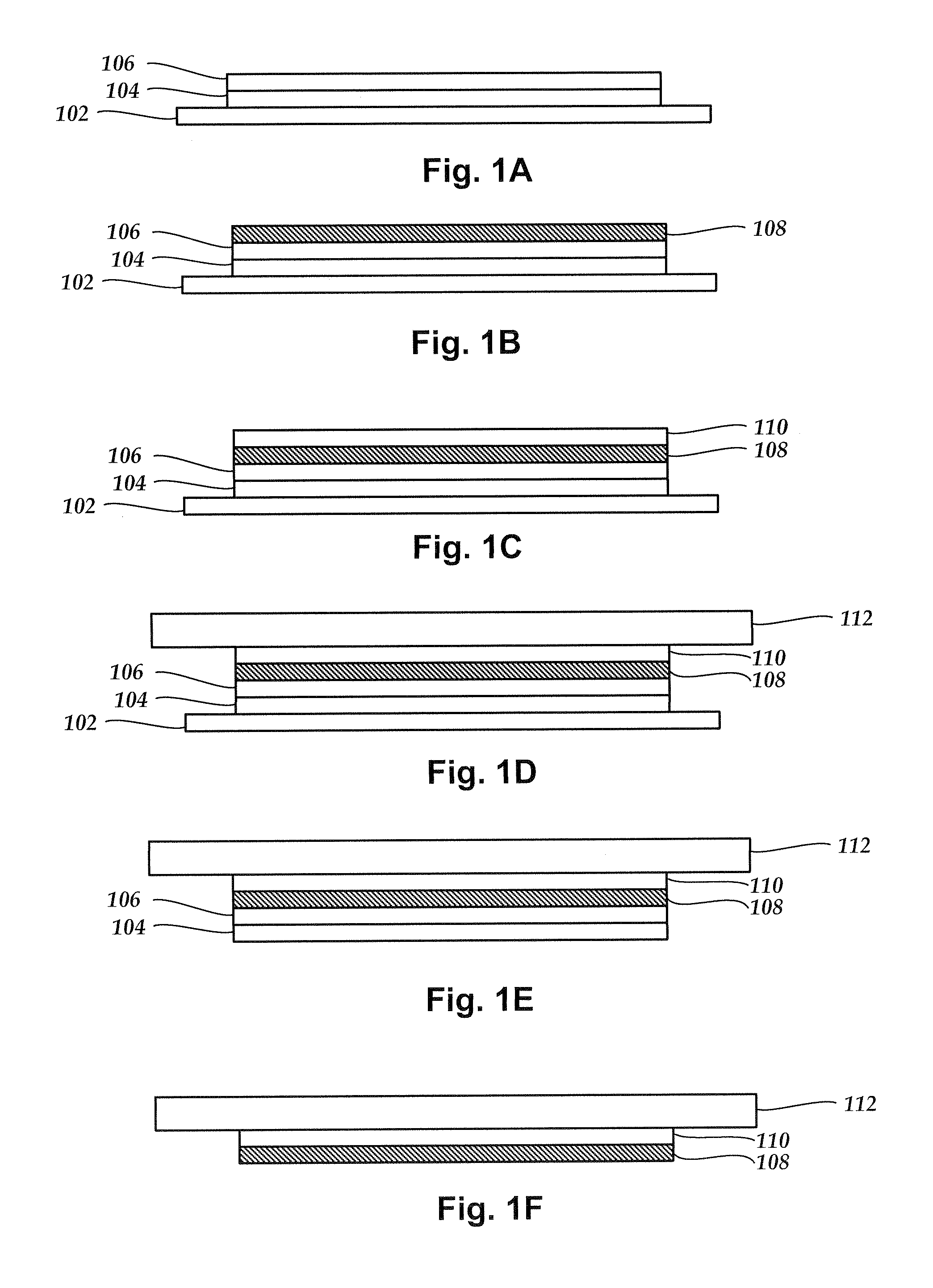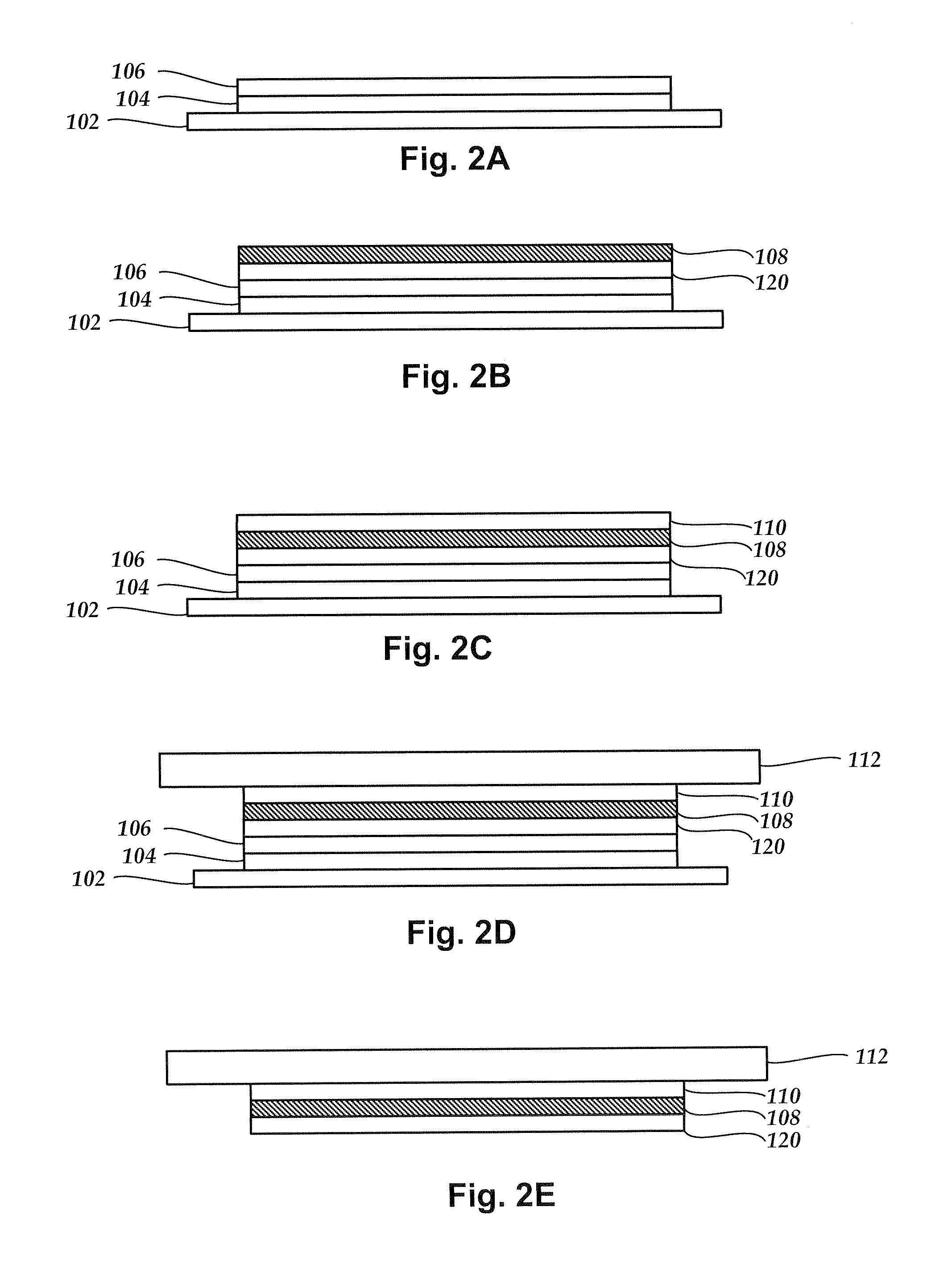Image transfer sheet with laser, led, or dye-sublimination printed image and methods of making and using
- Summary
- Abstract
- Description
- Claims
- Application Information
AI Technical Summary
Problems solved by technology
Method used
Image
Examples
example 1
Transfer of a Laser-Printed Image to White Weave
[0057]A 6.7% polyvinyl alcohol (PVA) (99+% hydrolyzed, purchased from Aldrich) solution was coated on a piece of filled, white poly(ethylene terephthalate) (PET) sheet using a Elcometer 4340 Motorized Automatic Film Applicator (Elcometer Inc., Rochester Hills, Mich.). The coating parameters were 200 micrometers in height setting and 20 in speed setting. After drying under ambient conditions for about 60 minutes a clear and smooth PVA thin coating was obtained.
[0058]A 6.5% isopropanol solution of polyvinylpyrrolidone (PVP, Sigma-Aldrich, Milwaukee, Wis.) was coated onto the PVA coating using the Elcometer 4340 at settings of 100 micrometers in height and 20 in speed. It was dried under ambient conditions for about 40 minutes to yield a clear coating.
[0059]An image was printed onto the PVP layer using a Brother HL-4040CN laser printer. The image was then cut out of the printout sheet along the image border with a pair of scissors. To the...
example 2
Transfer of a Laser-Printed Image to a Black Cotton T-Shirt
[0061]A 6.7% PVA solution was coated onto a sheet of PET on the Elcometer 4340 at settings of 200 micrometers in height and 20 in speed. A clear and smooth PVA coating was obtained after drying under ambient conditions for 1 hour. Upon the PVA coating a 6.5% PVP isopropanol solution was coated using the Elcometer 4340 at settings of 100 micrometers in height and 20 in speed. The coating was allowed to dry under ambient conditions for 1 hour.
[0062]The resulting sheet was attached to a piece of printer paper and fed into a Brother HL-4040CN laser printer. An image was printed onto the surface of the PVP layer. The image was cut out along the perimeter of the image. It was then sprayed with
[0063]Krylon Fusion 2320 White Paint (Krylon Products Group, Cleveland, Ohio) over the image until the image was completely covered by a coat of white paint. The white paint was dried under ambient conditions for 2 hours.
[0064]The image sheet...
example 3
Transfer of a Laser-Printed Image to the Outer Wall of a Ceramic Mug
[0065]A 6.7% PVA solution was coated onto a PET sheet on the Elcometer 4340 at settings of 200 micrometers in height and 20 in speed. After drying under ambient conditions for 1 hour, a clear and smooth PVA coating was obtained. A 6.5% PVP isopropanol solution was subsequently coated onto the PVA coating using the Elcometer 4340 at settings of 100 micrometers in height and 20 in speed and dried for 1 hour.
[0066]The sheet was first attached to a piece of printer paper and then fed into a Brother HL-4040CN laser printer, on which an image was printed onto the PVP layer. The image was cut out of the sheet using a pair of scissors. After spraying with Elmer's
[0067]Spray Adhesive over the image cutout, it was allowed to dry under ambient conditions for 15 minutes before it was attached to the outer wall of a white ceramic mug. The PET sheet was carefully peeled off from the sacrificial coating and the mug was further dri...
PUM
| Property | Measurement | Unit |
|---|---|---|
| Electrical resistance | aaaaa | aaaaa |
| Flexibility | aaaaa | aaaaa |
| Adhesivity | aaaaa | aaaaa |
Abstract
Description
Claims
Application Information
 Login to View More
Login to View More - R&D
- Intellectual Property
- Life Sciences
- Materials
- Tech Scout
- Unparalleled Data Quality
- Higher Quality Content
- 60% Fewer Hallucinations
Browse by: Latest US Patents, China's latest patents, Technical Efficacy Thesaurus, Application Domain, Technology Topic, Popular Technical Reports.
© 2025 PatSnap. All rights reserved.Legal|Privacy policy|Modern Slavery Act Transparency Statement|Sitemap|About US| Contact US: help@patsnap.com



